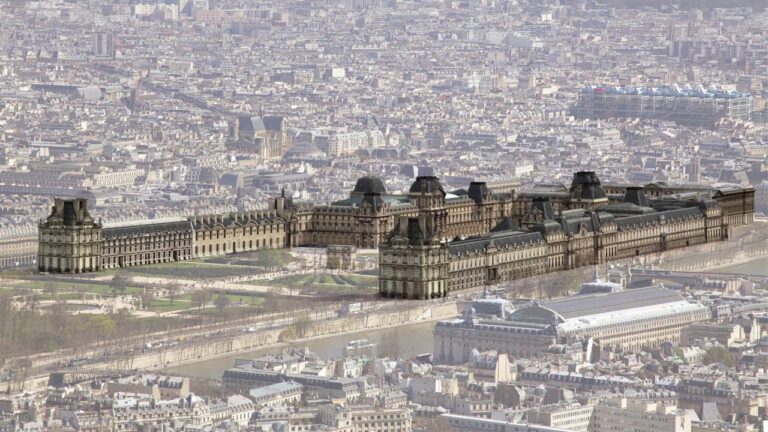The Louvre Museum is one of the most iconic and visited museums in the world, located in Paris, France. It is a former royal palace, and the largest museum in the world. It is home to some of the world’s most famous works of art, including the Mona Lisa and Venus de Milo.
History of the Louvre
The Louvre was first built in the 12th century by King Philip II as a fortress. It was then transformed into a royal palace in the 14th century by Charles V. It was the primary residence of the French kings until Louis XIV moved the court to Versailles in 1682. After the Revolution, it was transformed into a museum in 1793 by the revolutionary government.
The Louvre was opened to the public in 1793, and has been open ever since. Over the years, the collection of the museum has grown significantly, and now it is home to over 380,000 objects from prehistory to the 21st century. It is one of the most visited museums in the world, with over 9 million visitors each year.
The Collection
The Louvre houses a vast collection of art and artifacts from around the world. It is divided into eight departments: Egyptian Antiquities, Near Eastern Antiquities, Greek, Etruscan, and Roman Antiquities, Islamic Art, Sculpture, Decorative Arts, Paintings, and Prints and Drawings.
The most famous works of art in the Louvre include the Mona Lisa by Leonardo da Vinci, the Venus de Milo, and the Nike of Samothrace. The museum also houses a vast collection of Egyptian artifacts, including the iconic Great Sphinx of Tanis.
Visiting the Louvre
The Louvre is open every day except Tuesdays, from 9:00 a.m. to 6:00 p.m., and on Fridays until 9:45 p.m. It is located on the Right Bank of the Seine, in the 1st arrondissement of Paris. Admission to the museum is free for those under 26 years of age, as well as on the first Sunday of each month.
The Louvre Pyramid
The most recognizable feature of the Louvre is the glass pyramid in the courtyard, which was designed by Chinese-American architect I. M. Pei in 1989. The pyramid serves as the entrance to the museum, and is one of the most iconic structures in Paris.
The Louvre Today
The Louvre is one of the most important and visited museums in the world. It houses a vast collection of art and artifacts from around the world, and is a symbol of Paris and French culture. Visitors from around the world come to marvel at its beauty and the vast collection it contains.
The Louvre’s Impact on Art
The Louvre has had a huge impact on art, both in France and around the world. It has served as a source of inspiration for many artists, and its collections have been studied and admired for centuries. It is a testament to the power of art and its ability to transcend time and place.
Conclusion
The Louvre is a testament to the power of art, and its influence on the world. It has been a source of inspiration for centuries, and is one of the most iconic museums in the world. It is home to some of the world’s most famous works of art, and is a symbol of Paris and French culture.
